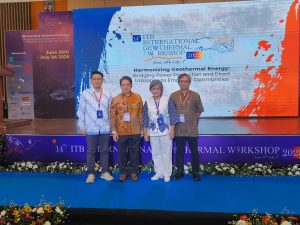Jakarta – Rising global temperatures and carbon dioxide (CO₂) concentrations due to climate change are not just affecting extreme weather and rising sea levels. A recently published international collaborative study reveals a new threat hidden in rice grains: elevated levels of inorganic arsenic in rice, which risks increasing the disease burden for Asian communities, including Indonesia.
The multi-institutional study, published in The Lancet Planetary Health on Wednesday, 16 April, shows that the combination of high temperatures and CO₂ concentrations expected by 2050 will synergistically increase the accumulation of inorganic arsenic (iAs) in rice plants.
Dongming Wang, lead researcher from the State Key Laboratory of Soil and Sustainable Agriculture, Chinese Academy of Sciences, said that the concurrent increase in CO₂ and temperature causes a significant increase in inorganic arsenic in grain.
Wang explained that changes in soil biogeochemistry due to global warming trigger the formation of arsenic species that rice plants more easily absorb. This is of great concern because rice is a staple food for billions of people.
Increased risk of cancer to heart problems
Lewis Ziska, a professor of Environmental Health Sciences from Columbia Mailman School who was also involved in the study, emphasises that the findings show the serious health effects of elevated arsenic in rice. She said that with rising arsenic levels, regions such as Southeast Asia and South Asia, including Indonesia, will face a surge in disease burden related to rice consumption.
The study used the FACE (Free-Air CO₂ Enrichment) method over a decade, examining 28 rice varieties under simulated 2050 conditions. The data was then modelled to estimate arsenic doses and projected health risks in seven major Asian countries: Bangladesh, China, India, Myanmar, the Philippines, Vietnam, and Indonesia.
Based on FAO and US EPA data, rice consumption per body weight is used to calculate exposure and estimate the increase in lifetime cancer cases. The study estimated that China is expected to have the most cases, with about 13.4 million arsenic-related cancers from rice consumption by 2050.
The researchers emphasise that while the threat is severe, there is still a way out. Suggested measures include breeding rice plants that absorb less arsenic, managing water and paddy soil to inhibit arsenic release from the subsoil, conducting consumer education campaigns, and regularly monitoring arsenic levels in consumed rice.
For a country like Indonesia, which relies heavily on rice as its primary food source, the results of this study are an early alarm that should not be ignored. If not addressed systematically, climate change will threaten food production and become a source of long-term health hazards through the food consumed daily. (Hartatik)
Banner photo: Image generated by OpenAI’s DALL·E via ChatGPT (2024)













